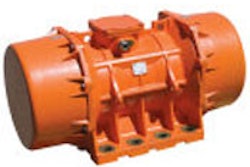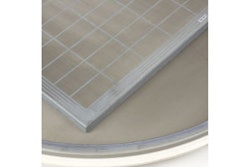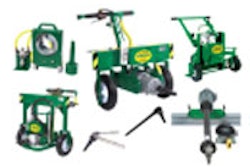So much coverage of the recent Novartis recall has focused on the problem — the potential that broken tablets and foreign tablets were packaged at the company’s Lincoln, Nebraska plant. While there is value in discovering what happened, I believe there is even greater value in focusing on how to prevent such problems in the future.
As brand owners, product manufacturers and contract packers watch the Novartis story unfold, many are asking themselves what it means to be diligent. It seems clear that inspecting the package is not enough — the tablets going into the package also need to be inspected. In this article, I will highlight the types of technologies that are available to prevent broken tablets, foreign tablets and softgel capsules as well as foreign material from being packaged.
Historical Perspective
Until recently, automated inspection of solid-dose pharmaceuticals was either crude (in the case of mechanical size graders); or expensive, slow and difficult to change over (in the case of single-file optical inspection systems). As a result, most pharmaceutical manufacturers and contract packers have relied only on sampling and/or manual inspection, both of which are far from error-proof.
Within the past few years, advancing technology has ushered in a new class of bulk vision-inspection systems that offer an effective, affordable and fast way to achieve 100 percent inspection. This new technology is fueling industry leaders to reevaluate the industry standards in an effort to apply the best practices now available.
Risks & Consequences
While the ideal acceptable quality level (AQL) is zero defects, compromises based on technological limitations as well as business and financial practices erode this ideal and suggest a more realistic real-world experience. As more compromises are made, the risk that defects and “foreigners” or “strangers” (tablets or softgel capsules from a different product run) are found in packaged product increases.
Three industry trends are exacerbating the risk of mix-ups. As more pharmaceutical manufacturing and packing is outsourced, more contract facilities are running a larger variety of products, making it necessary to change lines over more frequently, which, all else equal, increases the chance of cross-contamination. The increased separation of manufacturing from packaging introduces a greater the risk of mix-ups as well as foreign material making its way into product. As industry consolidation drives existing plants to handle a greater number of products, the chance of problems dramatically increases.
With the average cost of a recall at more than $1 million and the potential of serious damage to a company’s brand, product manufacturers and contract packers as well as brand owners are looking to reduce their exposure by improving quality assurance practices. Stepping up diligence serves a dual purpose. It significantly reduces the risk of a mix-up and it reduces the company’s exposure in the event that an incident does occur.
Manual Inspection
Most pharmaceutical manufacturers and packers that are inspecting product prior to packaging today use manual inspection because there are no capital costs and it provides a basis for claiming diligence. The biggest problem with this practice is that humans are spectacularly poor at inspection, especially over time as vigilance decays. Another big drawback is that labor is expensive and these costs are rising. Yields suffer as laborers pull good product out in their efforts to be active. Finally, adding people to the process can actually increase the risks of contamination and product security from both malicious acts and unintentional mistakes.
Mechanical Sorting
There are two types of mechanical sorters for solid-dose pharmaceuticals today — traditional diverging roller sorters and newer vibratory-size graders. Both types of systems are effective in removing broken tablets, under-filled/over-filled capsules and foreigners of a different size, but they do not remove defects and foreigners that are the same size as good product.
Several additional drawbacks of diverging roller sorters are the result of their mechanical complexity. They feature many moving parts that require significant maintenance. They typically depend on the skill of the operator to set up and adjust, which reduces the repeatability of performance. Furthermore, these systems can be time-consuming to sanitize during changeovers, typically losing two hours of production time.
By comparison, newer vibratory size graders feature few moving parts and no rotating parts, which reduces maintenance and results in a lower total cost of ownership than diverging roller sorters. Vibratory size graders can usually be cleared and cleaned in five minutes, and they use removable decks with fixed hole sizes for repeatable grading that makes the process independent of the operator’s skill. Lastly, vibratory size graders can often achieve three times the throughput of diverging roller sorters, handling up to one million doses per hour.
Blister Inspection
Many blister packing lines have integrated inspection systems that verify each blister pocket has a tablet. But since these systems do not typically verify the color, size or shape of the tablets, they are not effective at detecting and removing blisters with foreign tablets or defects. To assure final product quality, additional inspection should be upstream of the blister packing equipment.
Single-File Optical Inspection Systems
Single-file or single-stream optical inspection systems, which were first introduced 25 years ago, have been implemented only when the need to assure the highest product quality outweighs other commercial considerations. Most of these systems are highly effective in detecting and removing defects and foreigners based on differences in size, shape and color. However, they have not been widely adopted due to the systems’ extremely high capital costs, low throughput (often around 50,000 doses per hour), many expensive change parts and changeovers that often take as much as eight hours to complete.
Bulk Optical Inspection Systems
Although the first bulk optical inspection system for pharmaceuticals was introduced only five years ago, similar technology has a long and successful history in the food processing industry. Like single-file systems, bulk optical inspection systems are highly effective in detecting and removing defects and foreigners based on differences in size, shape and color. Unlike single-file systems, bulk optical inspection systems need not single-file or orient the products prior to inspection. They achieve high throughput, often inspecting up to one million tablets or capsules an hour, and they can be cleared and cleaned in less than five minutes. Bulk optical inspection systems are roughly one-third the cost of single-file systems, based on equivalent capacity. 
Best Practices
Today’s best practice relies on 100 percent inspection of tablets and capsules immediately prior to packaging to remove broken tablets and foreigners and verify the doses. While both single-file optical inspection systems and bulk optical inspection systems can be effective in this regard, bulk systems are the more commercially viable choice due to their relative affordability and high production throughput.
The most effective bulk optical inspection systems recognize subtle difference in color, size and shape to assure every tablet and softgel conforms to product specifications. If the system offers ultra-high resolution (defined as 0.17 mm square pixels), then the system can detect and remove foreigners as well as the smallest color and shape defects. This is best achieved with systems that use four color cameras that are located both above and below the product stream to view product from top and bottom.
The effectiveness of the system relies not only on the hardware but on the algorithms that define acceptable and unacceptable product. The equipment manufacturer’s experience and success with optical inspection systems in use in the pharmaceutical industry are key indicators of their ability to deliver systems that will achieve optimal performance.
The Future
Based on what I’ve seen in other industries, I believe that using bulk optical inspection systems to verify pharmaceutical products immediately prior to packaging will, over time, evolve from being a “best practice” and become an industry standard, much like metal detection.
Virtually all potato chips are inspected by an optical system prior to packaging. Given the higher value of pharmaceutical products and the higher risk of mix-ups and greater exposure to lawsuits, it makes sense that the same level of quality assurance be given to pharmaceuticals.
For more information, please visit www.symetix.com.























